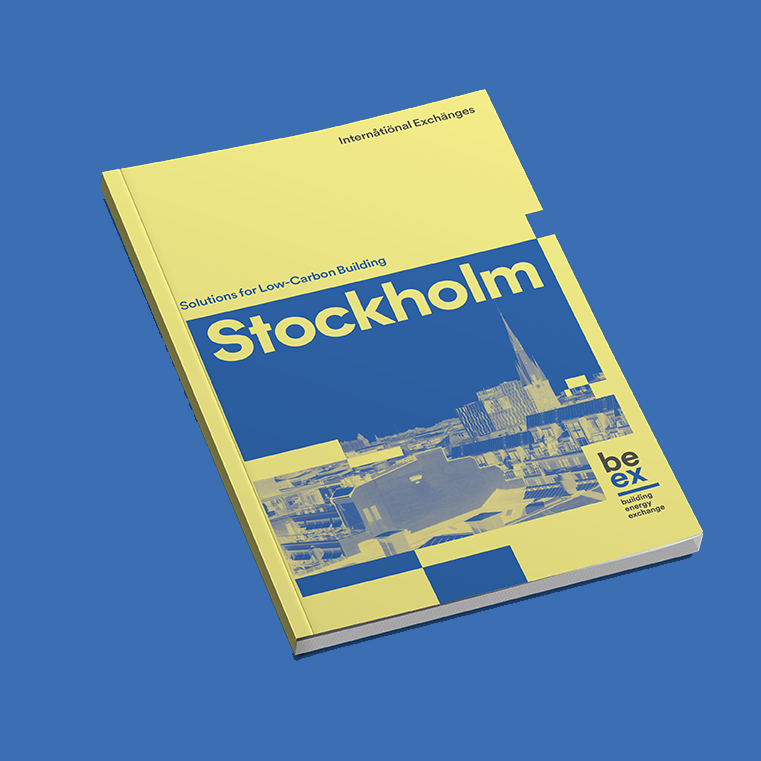Solutions for Low-Carbon Building:
Stockholm
With ambitious goals of fossil-fuel-free operations and net-zero greenhouse gas emissions by 2030, Stockholm has become a frontrunner in sustainable urban development.
In the buildings sector, Stockholm touts one of the world’s largest open district heating networks, district-level electrification initiatives, and Passive House-level performance standards for municipal buildings, among its many accomplishments. Stockholm’s successes in these areas present a major opportunity for knowledge exchange between NYC and Sweden, given our closely aligned climate objectives.
US Delegation:
Brett Bridgeland, Principal, Carbon-Free Buildings, RMI
Lane Burt, Managing Principal, Ember Strategies
Tom Damsell, Vice President of Engineering, Brookfield Properties
Molly Dee-Ramasamy, Director, Deep Carbon Reduction Group, JB&B
Gregory Elcock, VP, Energy Efficiency and Distributed Resource Integration, Con Edison
Adam Hinge, Managing Director, Sustainable Energy Partnerships
Geoff Hurst, Vice President, Sustainability, Related
Ben Myers, Senior Vice President, Sustainability, BXP
Jeff Perlman, Founder and Chief Strategy Officer, Bright Power
Travis Smith, Principal, Smith Engineering
Ke Wei, Senior Advisor, NYSERDA
Richard C. Yancey, Executive Director, Building Energy Exchange
Will DiMaggio, Manager, Education and Engagement, Building Energy Exchange
Thanks:
Niclas Carlsson, Director, International Market Development, Swedish Energy Agency
Veronica Eade, Director, Built Environment, Swedish Energy Agency
Sandra Ideskär, Senior Business Developer, Swedish Energy Agency
Verena Adamheit, Senior Business Developer, Swedish Energy Agency
Charlotte Svensson, Senior Business Developer, Swedish Energy Agency
Paul Westin, Senior Business Developer, Swedish Energy Agency
Gina Aspelin Hedbring, International Projects, IVL Swedish Environmental Research Institute
Lidia Partheni, Visit Program Manager, IVL Swedish Environmental Research Institute
Michael Reed, Team Lead, Advanced Efficiency Solutions, NYSERDA
Trip Itinerary:
Day 1
SISAB, Meatpacking District (Slakthusområdet): Introduction to SISAB and their work around AI-driven digital building controls, spanning 150 properties and 20,000 sensors.
Sofia Johansson, Chief of Staff, SISAB
Grow Smarter: Presentation of three projects by the GrowSmarter, a consortium of European cities and industries focused on pilot-level smart city solutions for energy, infrastructure, and transport.
Lisa Enarsson, Project Manager, City of Stockholm
Peter Andersson, Business Development Energy Solutions, Lassila & Tikanoja
Johanna Nerell, Open District Heating, Stockholm Exergi
Harry Matero, Installation Consultant, Insam AB
Slaktkyrkan & Palmfelt Center: Commercial buildings with smart energy management, control systems, and district heating with heat recovery technologies.
Mathias Mellqvist, Technical Manager, Atrium Ljungberg
Peter Andersson, Business Development Energy Solutions, Lassila & Tikanoja Sverige
Valla Torg: 1960s-constructed multifamily apartment complex, recently retrofitted to reduce energy use by more than 60%, using envelope upgrades, district heating, geothermal, and heat recovery strategies.
Harry Matero, Installation Consultant, Insam AB
Ary Zanganeh, Projet Manager, Stockholmmshem
KTH Live-In-Lab: A testbed for innovation in construction and real estate sectors, hosted at the Royal Institute of Technology.
Per Lunndqvist, Director of Research and Education, KTH Live-in Lab
Marco Molinari, Co-Director, KTH Live-In Lab
Day 2
Hötorgshusen: Four 1960s-built high-rise commercial properties recently retrofit with geothermal systems.
Ulf Naslund, Director of Technology and Development, Vasakronan
Daniel Holm, Technology and Development, Vasakronan
Hästskopalatset: Historical building retrofitted to LEED standards, focused on materials reuse, geothermal, and energy efficiency upgrades.
Therese Hultquist, property developer, Vasakronan
Claire Mirjolet, Project Manager Sustainability, Vasakronan
Lotta Björnstad, Project Manager, Skanska Sverige AB
Mikael Kelfve, Installation Strategist, Skanska Sverige AB
Sigrid Månsson Wikander, Marketing Director, Skanska Sverige AB
URBAN ESCAPE: Cluster of five mixed-use commercial properties, retrofitted to energy efficiency, comfort, and sustainability in mind.
Christer Forsblad, Energy Coordinator AMF Property Developers
Michael Eskils, Sustainability Manager, AMF Property Developers
Jonas Glennstål, Technical Manager, AMF Property Developers
Day 3
Stockholm Exergi: Presentation of District Heating followed by a guided tour of Stockholm Exergi, Stockholm’s energy provider and district heating and cooling network operator.
Erik Dahlén, Head of CDR Research Program, Stockholm Exergi
Geothermal Energy Storage Presentation: Presentation on the technical and economic aspects of storing heating and cooling in the bedrock.
Kim Ojanne, Country Manager, Rototec GROUP
ECO Governance Workshop: Workshop on collaborative approaches and horizontal management skills to address complex environmental issues in energy, real estate, and policymaking arenas.
Jonas Törnblom, CEO, Envito
Kim Ojanne, Country Manager Rototec GROUP
Mikko Ojanne, CEO, Rototec GROUP
Johnny Lönnroth, Principal Analyst, Rototec Group
Teresa Enander, COO, Formica Capital
John Wibrand, System Development Director Digital Services, Swegon
Ulf Hörman, Business Development Director System & Solutions, Swegon
Johan Lindskog, Project Development Manager, AMF
Mikael Kefve, HVAC Specialist, Skanska
Charles Caure, Building Performance Engineer, Skanska


